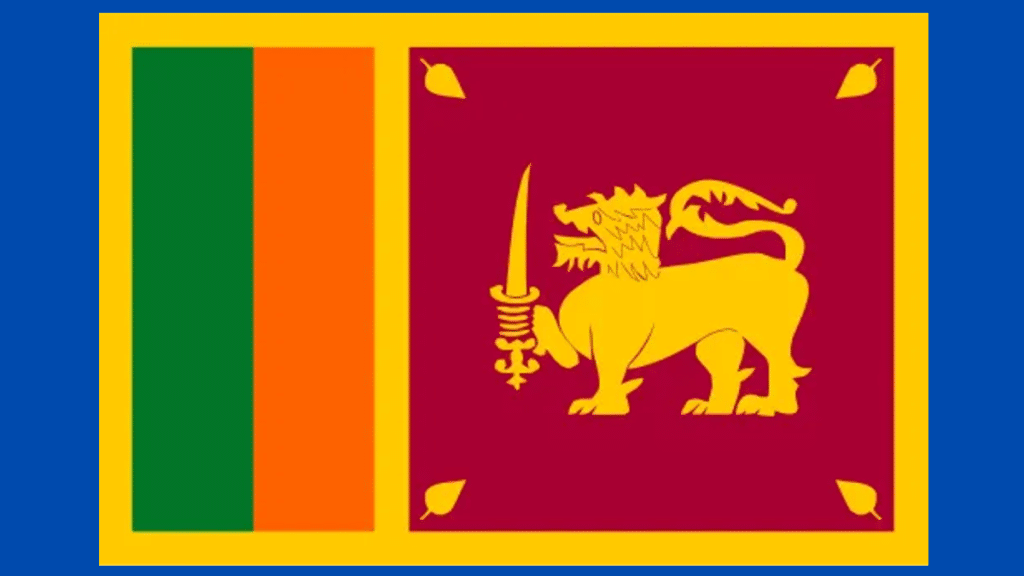Sri Lankan cricket isn’t polite. It isn’t measured. It’s raw, emotional, and completely unpredictable. On their day, they can tear apart the best teams in the world. Off it, they can self-destruct like nobody else. But that’s what makes them so captivating.
Cricket isn’t a pastime here—it’s an obsession. You don’t need fancy academies or million-dollar facilities to find the next big thing. You’ll see kids in barefoot scraps on the beach, in alleys, on patches of dirt, hammering the ball with nothing but sheer hunger. The dream? To wear that Sri Lanka jersey, to walk out under the lights, to hear a stadium full of their own chanting their name. That’s not romance—it’s reality.
But it takes more than talent to survive in international cricket. The Sri Lanka national cricket team is built on an iron will and a knack for proving people wrong. They’ve done it before—blindsiding the world to win the 1996 World Cup, coming within touching distance of glory in 2007 and 2011, and bossing the 2014 T20 final against India. They’ve never had the riches or resources of the cricketing superpowers, but they’ve had something money can’t buy—pride, grit, and players who play like warriors.
Every great team needs a leader, and the Sri Lanka national cricket team captain wears more than just an armband. He’s carrying the weight of a country that breathes cricket, with fans who expect nothing less than total commitment. Then there’s the Sri Lanka national cricket team coach—the guy behind the scenes, stitching together a mix of youth and experience, dealing with everything from form slumps to selection headaches. It’s not an easy gig, but Sri Lanka’s best coaches know one thing: this team thrives on belief.
They’ve been written off more times than anyone can count. But Sri Lanka doesn’t do quiet exits. They don’t back down from a fight. They turn up, they scrap, and sometimes, when it matters most, they pull off the impossible. If you think they’re out of the picture, you haven’t been paying attention.
And if you’re serious about match predictions and strategies, take a look at the betting exchange login. You never know when Sri Lanka might shake up world cricket again.

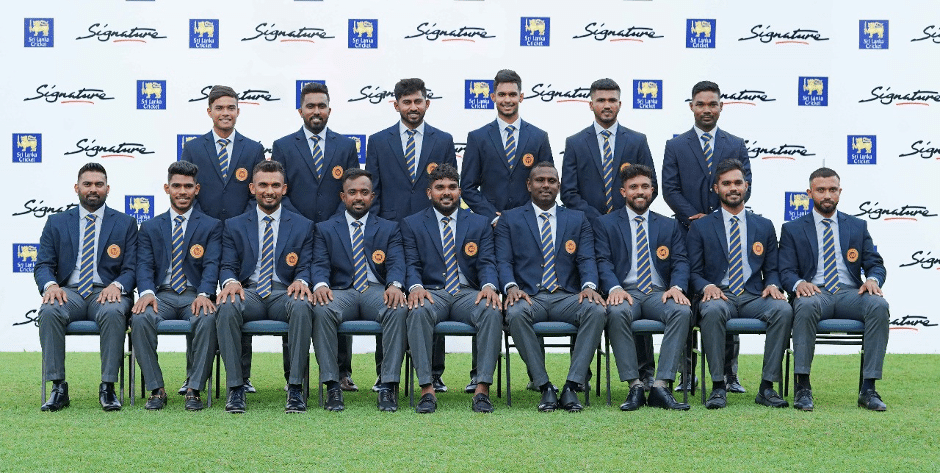

History and Evolution of the Sri Lanka National Cricket Team
Sri Lanka’s cricketing rise wasn’t some fairy tale—it was a scrap, a fight, a battle for recognition. Cricket arrived with British colonial rule, but while the English played in manicured gardens, Sri Lankans were forging their own game on dusty fields, with whatever equipment they could find. By the early 1900s, local clubs had emerged, but the real goal was much bigger—to stand toe-to-toe with the best in the world.
That chance finally came in 1981, when Sri Lanka was granted Test status, officially breaking into cricket’s elite. But let’s be real—no one expected much from them. They weren’t supposed to trouble the big boys, and for a while, they didn’t. The early years were brutal—tours filled with crushing defeats, bowlers taken apart by world-class batsmen, and a team still trying to find its feet. But one thing was clear: Sri Lanka never backed down.
A core group of fighters—Arjuna Ranatunga, Aravinda de Silva, Roshan Mahanama—knew that survival wasn’t enough. They had to change the way Sri Lanka played the game. And by the 1990s, that’s exactly what they did.
Sri Lanka threw caution out the window. They stopped playing safe, traditional cricket and started attacking from ball one. Sanath Jayasuriya and Romesh Kaluwitharana revolutionized ODI batting, tearing apart opposition attacks in the powerplay when others were still nudging singles. This wasn’t an accident—it was a statement.
Then came 1996—the year Sri Lanka made the world stand up and take notice. They stormed through the Cricket World Cup, brushing aside India, England, and finally Australia in the final. Aravinda de Silva produced a masterpiece, a knock that still lives in Sri Lankan cricketing folklore, while Ranatunga led with street-smart toughness, ensuring his team got over the line. This wasn’t a fluke. Sri Lanka were world champions, and the cricketing hierarchy had been shaken to its core.
From there, Sri Lanka never looked back. Muttiah Muralitharan rewrote history, becoming the greatest wicket-taker the game has ever seen. Mahela Jayawardene and Kumar Sangakkara brought a level of elegance and intelligence that defined a generation. More finals, more battles, more unforgettable moments.
Of course, the journey hasn’t been smooth. Ups and downs, rebuilding phases, and moments where critics have written them off. But here’s the truth—Sri Lanka doesn’t care what the world thinks. They’ve made a habit of proving people wrong. And they’ll do it again.
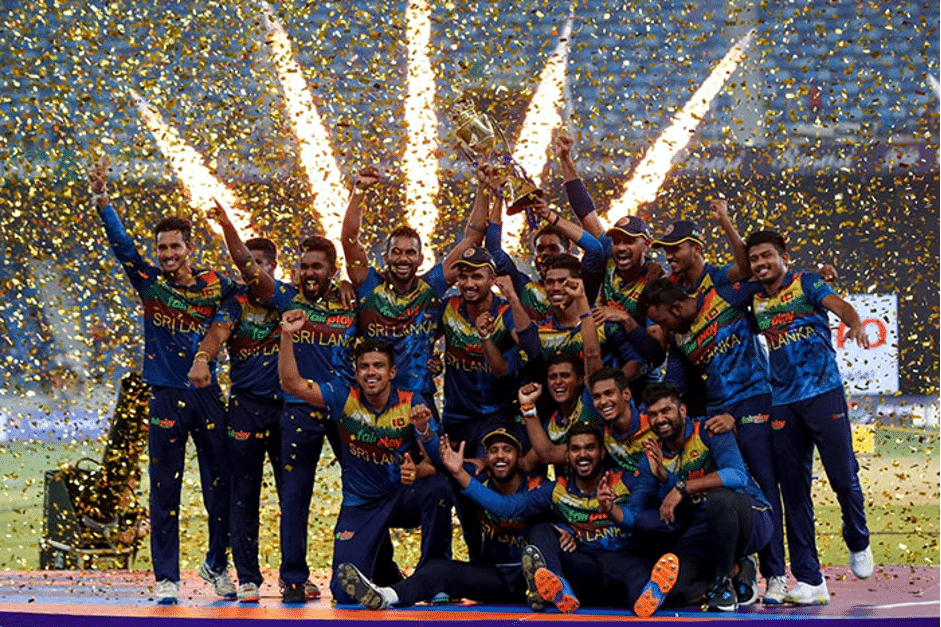
Achievements and Milestones
Sri Lanka’s cricketing journey is packed with big moments, heartbreaks, and comebacks. They’ve gone toe-to-toe with the best, fallen short at times, but always left their mark.
Near Misses That Proved Their Strength
- 2007 & 2011 Cricket World Cups – Two finals, two heartbreaks. In 2007, they ran into an Australian machine that was untouchable. In 2011, they came agonizingly close but couldn’t stop India’s dream run in Mumbai.
- 2009 & 2012 ICC T20 World Cups – Runners-up both times, but they had the cricketing world on notice. Sri Lanka was consistently at the top of white-ball cricket, always a threat on the big stage.
- The Spin King’s Record – Muttiah Muralitharan’s 800 Test wickets is a number that might never be touched. The greatest off-spinner in history, a magician with the ball, and the heart of Sri Lankan cricket for over a decade.
When Sri Lanka Ruled the World
- 1996 Cricket World Cup – The moment that changed everything. Arjuna Ranatunga’s men didn’t just win a trophy; they redefined how cricket was played. Sanath Jayasuriya’s explosive batting tore through opposition attacks, and in the final, Aravinda de Silva put on a show, sealing victory against Australia. Sri Lanka wasn’t an underdog anymore. They were world champions.
- 2002 ICC Champions Trophy – No one likes a shared trophy, but Sri Lanka dominated this tournament. The final against India was washed out, denying them a solo win, but it didn’t matter. Sri Lanka proved they belonged among cricket’s elite.
- 2014 ICC T20 World Cup – This was redemption. After losing multiple finals in the late 2000s, Sri Lanka finally got their hands on a T20 World Cup, beating India in the final. Kumar Sangakkara and Mahela Jayawardene—two of Sri Lanka’s greatest ever—bowed out in style, delivering a victory that meant more than just another trophy. It was a statement that Sri Lanka still had the fight, the talent, and the hunger to win on the world stage.
A Team Built for the Big Occasion
Sri Lanka might not always dominate the rankings, but when the spotlight is on, they deliver. From stunning the world in ‘96 to pulling off jaw-dropping upsets in recent years, they’ve always been a team that rises to the moment. Doubt them at your own risk.
Sri Lanka National Cricket Team Captain: A Job for the Brave
Being the Sri Lanka national cricket team captain isn’t for the faint-hearted. It’s a role that comes with unreal expectations, a passionate fanbase that demands results, and a history filled with both glory and heartbreak. One day, you’re a hero. The next, you’re under fire. Leading this team means handling the pressure, the politics, and the unpredictability that comes with Sri Lankan cricket. It’s not just about setting fields and making bowling changes—it’s about carrying the weight of an entire cricket-obsessed nation.
The Great Captains Who Set the Standard
- Arjuna Ranatunga (1988-1999) – The man who changed everything. Tough as nails, he led Sri Lanka to the 1996 World Cup, staring down bigger teams and refusing to take a step back. He played cricket with an attitude, and that attitude won them the biggest prize in the sport.
- Sanath Jayasuriya (1999-2003) – An attacking genius, both as a batsman and a captain. He didn’t just lead—he bullied bowling attacks into submission. Under him, Sri Lanka became an aggressive, fearless team.
- Mahela Jayawardene (2006-2009, 2012-2013) – A master tactician, cool under pressure, and a leader who knew exactly how to handle the big moments. Took Sri Lanka to multiple finals and played one of the greatest World Cup innings ever in 2011.
- Kumar Sangakkara (2009-2011) – The definition of class and intelligence. Led Sri Lanka to the 2011 World Cup final and was the type of captain who commanded respect without needing to demand it.
The Man in Charge Today
Right now, the captain’s armband belongs to Dhananjaya de Silva, and his job is nothing short of massive. Sri Lanka is in a transition phase—new players, new challenges, and a desperate need to bring consistency back into the team. The modern game doesn’t allow time for slow rebuilds. A Sri Lankan captain has to be more than just a leader on the field—he has to set the tone for a new era.
The world might not be talking about Sri Lanka like they used to. But great captains don’t wait for people to believe in them—they prove them wrong. That’s the challenge ahead. Let’s see if he’s up for it.
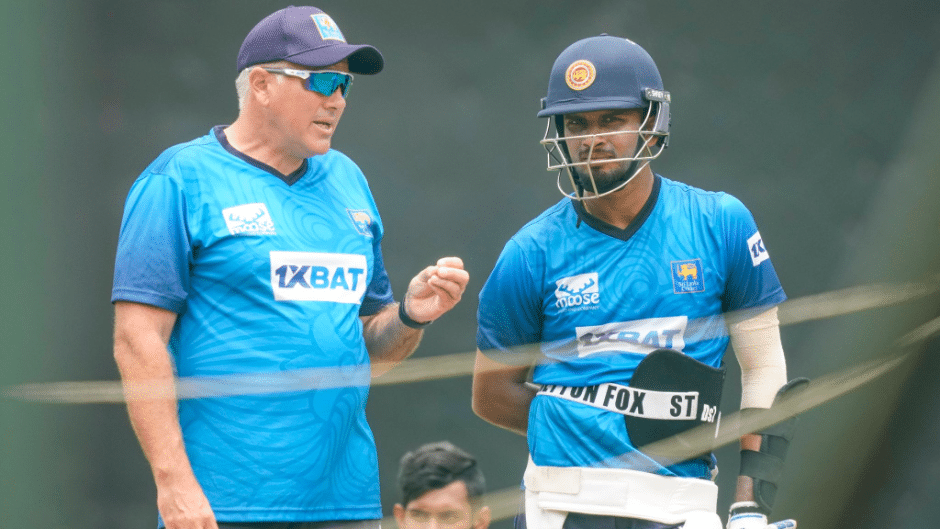
Sri Lanka National Cricket Team Coach and Coaching Staff
A Sri Lanka national cricket team coach doesn’t walk into an easy job. He walks into a dressing room full of expectation, pressure, and the weight of a cricket-mad nation breathing down his neck. This isn’t a place for clipboard managers or textbook theories—it’s a place for leaders who understand how to build warriors, not just cricketers.
Coaching Sri Lanka is about finding the balance between raw talent and structure. Over the years, the best coaches have recognized the flair, unpredictability, and natural aggression Sri Lankan players bring. Some have tried to refine it, others have tried to control it, but the ones who truly thrived knew how to channel that fire rather than put it out.
In the ‘90s, coaches like Dav Whatmore backed a fearless approach—unleashing power-hitters at the top of the order, shaking up the traditional way of playing ODIs, and turning Sri Lanka into 1996 World Cup champions. Later, coaches like Tom Moody brought a more structured but equally aggressive mentality, guiding the team to another World Cup final in 2007.
Then there were the struggles—coaching changes, inconsistency, and tactical confusion. But the best ones? The ones who survived? They understood that Sri Lanka thrives on confidence, rhythm, and an “us against the world” mentality.
The current Sri Lanka national cricket team coach, Chris Silverwood, has a massive challenge on his hands. It’s a team in transition, a mix of young blood and experienced heads, searching for identity. His job isn’t about reinventing the wheel. It’s about bringing discipline without killing creativity, sharpening skills without dulling natural instinct.
The right coach doesn’t just dictate a game plan—he inspires belief. And if Sri Lanka is going to get back to the top, belief is where it all starts.
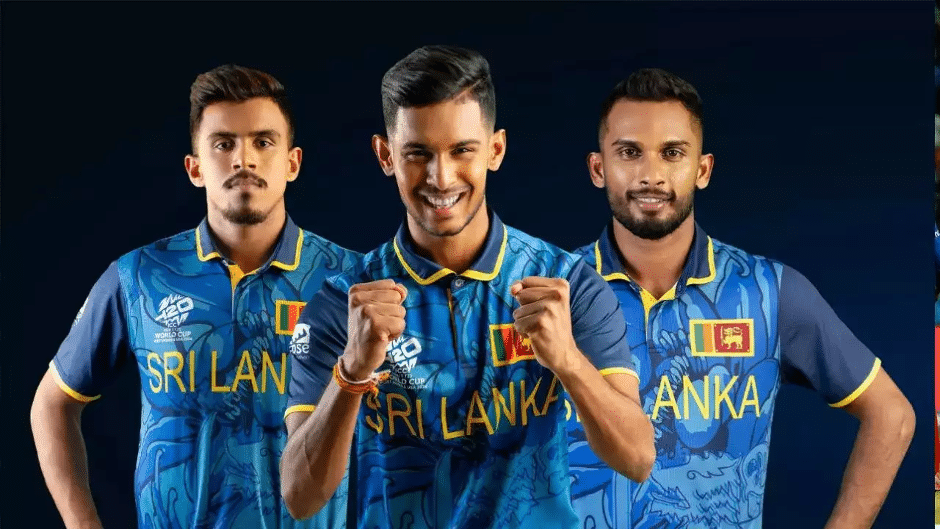
“Sri Lanka’s cricket is not just a sport, but an emotion that unites the entire nation.” – Kumar Sangakkara
Sri Lanka’s cricketing story is built on grit, rebellion, and an outright refusal to back down. They weren’t handed success. They scrapped for every win, fought for respect, and when the world wasn’t looking, they shocked everyone and took the crown in 1996. That World Cup wasn’t a fluke—it was a statement. A team that had once been dismissed as outsiders turned up, took on the heavyweights, and left them in the dust. Fearless cricket, a fearless team.
Through the years, Sri Lanka has built a reputation for playing cricket their way—aggressive, unpredictable, and impossible to ignore. They’ve given the world geniuses like Muttiah Muralitharan, warriors like Arjuna Ranatunga, artists like Kumar Sangakkara, and explosive game-changers like Sanath Jayasuriya. They’ve won trophies, stunned bigger teams, and broken records, all while carrying the weight of a cricket-mad nation on their shoulders.
Now, the challenge is different. The game has evolved, and Sri Lanka is in the middle of a rebuild. But if history has taught us anything, it’s that this team thrives when their backs are against the wall. With a new generation of talent, a Sri Lanka national cricket team coach determined to bring them back to glory, and a Sri Lanka national cricket team captain ready to lead from the front, the pieces are there.
Doubt them if you want—but Sri Lanka doesn’t stay down for long. The next big moment? It’s coming. And when it does, they won’t just win—they’ll make sure the world remembers it.
Frequently Asked Questions
1. Who is leading the Sri Lanka national cricket team right now?
The Sri Lanka national cricket team captain is Wanindu Hasaranga. A proper fighter on the field, Hasaranga isn’t just an elite all-rounder—he’s now tasked with leading the side through a crucial rebuilding phase. It’s a big job, and the expectations are through the roof. But Sri Lanka has never been short on leaders who thrive under pressure.
2. Who’s calling the shots as the Sri Lanka national cricket team coach?
That would be Chris Silverwood. A seasoned coach with experience at the highest level, his job isn’t just about tactics—it’s about bringing consistency and discipline to a squad that has all the raw talent but needs direction. As of 2024, he’s the man in charge, looking to get Sri Lanka firing on all cylinders again.
3. When did Sri Lanka win the Cricket World Cup?
The 1996 ICC Cricket World Cup—that was Sri Lanka’s crowning moment. Under Arjuna Ranatunga’s fearless leadership, they took the world by storm, playing aggressive, attacking cricket that no one saw coming. The final? A masterclass, with Sri Lanka outplaying Australia and sending shockwaves through world cricket.
4. Which Sri Lankan cricketer owns the record for the most Test wickets?
There’s only one answer to this—Muttiah Muralitharan. 800 Test wickets. Let that sink in. No bowler in history has taken more. The man didn’t just spin the ball; he made it talk. Opposition batsmen spent entire careers trying to figure him out—and most never did. The greatest spinner the game has ever seen.
